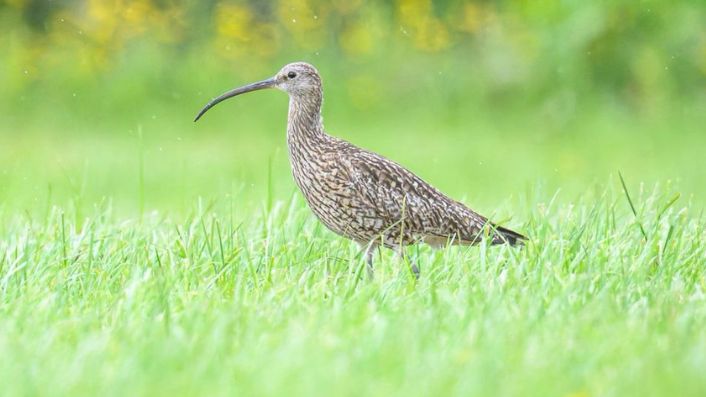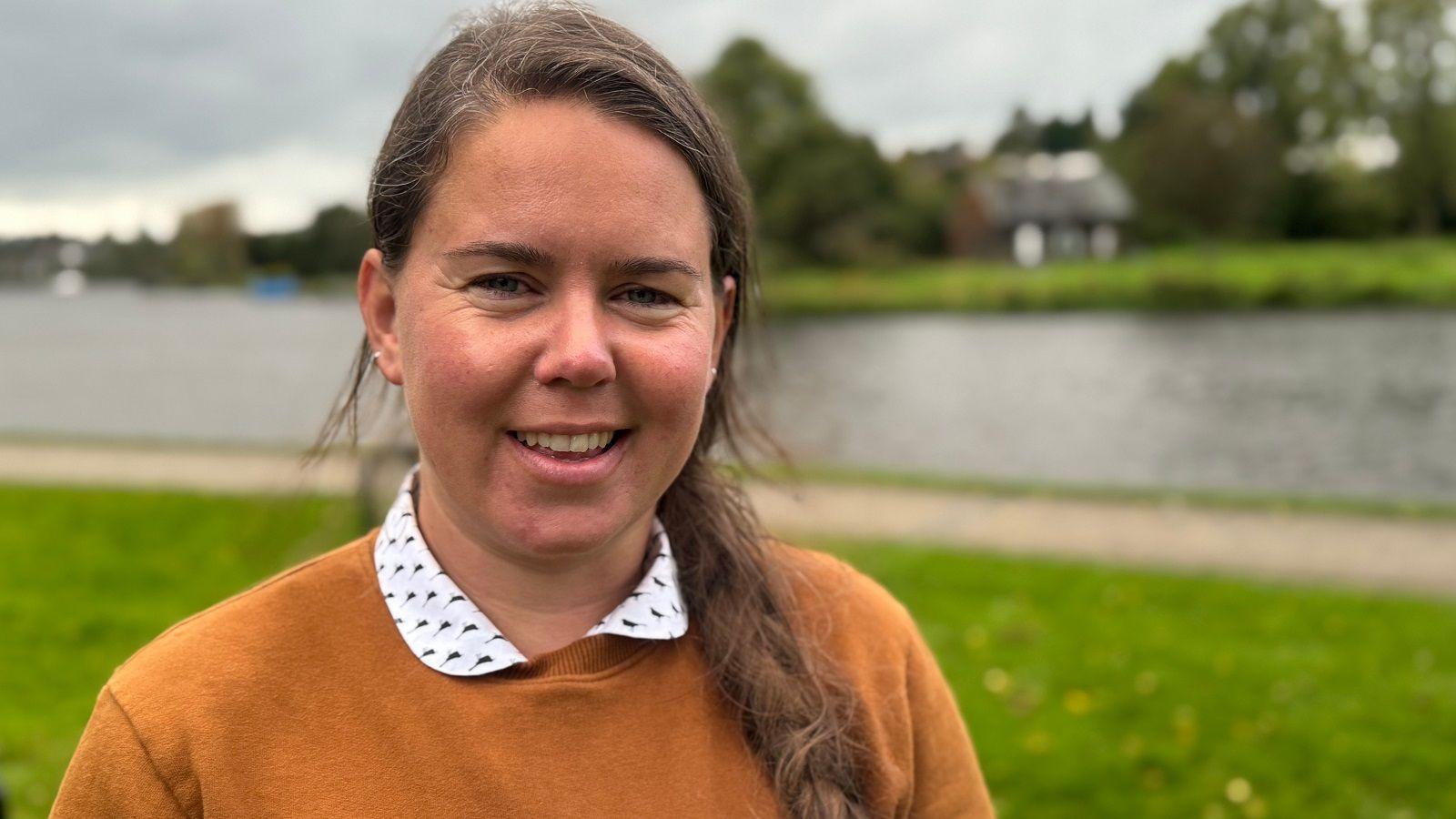Campaign to save last remaining breeding curlews

Curlew numbers have been in decline across the country
- Published
Bird enthusiasts in Warwickshire are raising money to try to save some of the last remaining curlews in the area.
Just a handful of breeding pairs of the wading birds, more commonly found on the west coast of the UK, can now be spotted around Tysoe and Napton.
They come to the area in the early spring to nest and raise their young in grassy fields.
The Banbury Ornithological Society said because they were ground nesting birds they had been vulnerable to changes in farming practices, like cutting hay earlier and a rise in predation from foxes.
In 2004, there were 25 breeding pairs recorded in Warwickshire, but this year's survey found there are now just five pairs, all in the south of the county.
Nationally, the species is now red-listed after a steep decline in population.
Jan Guilbride, who is in charge of curlew recovery for the Banbury Ornithological Society, said: "They are vulnerable to all of the predators that are around, so anything that likes to eat eggs or chicks will come and find them and try to eat the eggs and the chicks."
She said that included foxes, badgers, buzzards and crows.
The Trust for Oxfordshire's Environment and Wild Oxfordshire have teamed up to raise £50,000 to support curlew conservation in Warwickshire and the upper Thames area.
They have already managed to raise more than £25,000 and money will be matched by the BA Better World Community Fund and the Aviva Community Fund.
It will be spent on fencing off areas of land to protect the birds from foxes, and to pay farmers to leave any fields where nests are found for longer before the hay is cut, to allow the chicks to hide from buzzards.
'Running out of time'
Ms Guilbride said: "There's lots of different things we can do in terms of recruiting volunteers and training them and helping them."
She said they would look to rent land from farmers which would be fenced off, to allow curlews to nest.
But she said: "We can't just expect the farmers to just pay for all of that themselves."
The Curlew Partnership, led by Wild Oxfordshire, said over the past five years it had protected 110 nests using temporary electric fencing, resulting in 74% hatching success rate, compared to the national average of 25%.
Campaign volunteer Rosemary Collier said: "We are rapidly running out of time to keep this iconic species in our county.
"We want generations to come to hear the amazing sound of the curlew across the meadowlands and wetlands of Warwickshire."
Get in touch
Tell us which stories we should cover in Warwickshire
Follow BBC Coventry & Warwickshire on BBC Sounds, Facebook, external, X, external and Instagram, external.
- Published16 November

- Published18 October

- Published9 October 2024

- Published24 July
